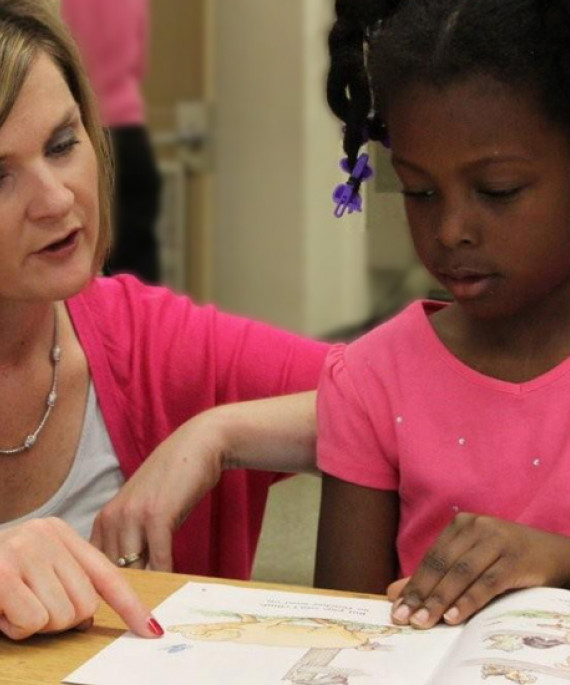Reading Recovery scale-up proves to be good news for struggling readers and their schools
In a new study, Reading Recovery is shown to be three times more effective than similar reading programs. In addition, teachers trained in Reading Recovery were able to teach the program correctly across the hundreds of Reading Recovery sites in the U.S., which is a sign of systematic, high-quality training.
Reading Recovery is an intensive tutoring program for first graders struggling to read and write. More than 2 million young learners have benefited since Ohio State University researchers introduced it in North America in 1984.
Based on an independent study the largest study of its kind, the federal What Works Clearinghouse (WWC) gave Reading Recovery its highest rating, “without reservation.”
The What Works Clearinghouse reviews high-quality research in education and provides educators with the information needed to make evidence-based decisions.
What Works Clearinghouse: Significant impact on reading achievement
“The study’s authors found, and the WWC confirmed, that Reading Recovery had a significant impact on general reading achievement of struggling readers in first grade,” said Emily Rodgers, co-director of Reading Recovery i3 Scale-up and associate professor of teaching and learning at Ohio State. The WWC also confirmed positive impact on two subtests: general reading achievement and reading comprehension.
The new independent research presented results of the five-year, $45.6 million Investing in Innovation (i3) Fund grant awarded by the U.S. Department of Education to “scale up” or expand Reading Recovery. The Consortium for Policy Research in Education (CPRE) conducted the study of the scale-up, the first in a three-part series.
Nineteen universities partnered with Ohio State to offer graduate-level credit to train 3,690 additional teachers in Reading Recovery. Four years into the five-year i3 grant, the project has surpassed its goals.
A total of 628 schools participated in the second year of the grant. Of those, 209 were selected for the randomized controlled trial.
“We know that the teachers and administrators have seen remarkable changes in student learning over Reading Recovery’s short-term intervention. We also know that today’s educators increasingly rely on strong experimental research to guide decision-making,” said Jerome D’Agostino, director of the i3 scale up and professor of educational studies.“The recent What Works Clearinghouse review confirms Reading Recovery’s positive impact on student learning.”
D’Agostino joined with other i3 project directors to brief Congressional leaders and staff in Washington, D.C., in September 2014. He told participants about how Reading Recovery is using evidence to improve schools nationwide. He discussed how to get the most return for federal investments, in particular how to ensure successful outcomes. He also outlined the need to build capacity so all children receive an outstanding education.
About this single-study research
The full report and an executive summary are available online. The evaluation report is a collaborative publication between CPRE and the University of Delaware Center for Research in Education and Social Policy (CRESP). CPRE member institutions are the University of Pennsylvania, Teachers College Columbia University, Harvard University, Stanford University, University of Michigan, University of Wisconsin-Madison and Northwestern University.
About the i3 scale-up grant
In October 2010, the USDE awarded a five-year, $45.6 million Investing in Innovation (i3) grant to Ohio State University. An additional $10.1 million was also raised from the private sector to support Reading Recovery training across the United States at all 19 Reading Recovery university training centers. The funds are supporting yearlong Reading Recovery graduate-level training for more than 3,690 teachers who will utilize their expertise to reach nearly half a million children by 2015, the final year of the grant.
Although all U.S. schools are eligible for professional development funding provided by the i3 grant, particular priority was given to very low-performing schools, schools in rural areas, and schools with high populations of English language learners.


